Quiz-summary
0 of 50 questions completed
Questions:
- 1
- 2
- 3
- 4
- 5
- 6
- 7
- 8
- 9
- 10
- 11
- 12
- 13
- 14
- 15
- 16
- 17
- 18
- 19
- 20
- 21
- 22
- 23
- 24
- 25
- 26
- 27
- 28
- 29
- 30
- 31
- 32
- 33
- 34
- 35
- 36
- 37
- 38
- 39
- 40
- 41
- 42
- 43
- 44
- 45
- 46
- 47
- 48
- 49
- 50
Information
Theory exam 14, contains 50 questions.
You have already completed the quiz before. Hence you can not start it again.
Quiz is loading…
You must sign in or sign up to start the quiz.
You have to finish following quiz, to start this quiz:
Results
0 of 50 questions answered correctly
Your time:
Time has elapsed
Categories
- Not categorized 0%
- 1
- 2
- 3
- 4
- 5
- 6
- 7
- 8
- 9
- 10
- 11
- 12
- 13
- 14
- 15
- 16
- 17
- 18
- 19
- 20
- 21
- 22
- 23
- 24
- 25
- 26
- 27
- 28
- 29
- 30
- 31
- 32
- 33
- 34
- 35
- 36
- 37
- 38
- 39
- 40
- 41
- 42
- 43
- 44
- 45
- 46
- 47
- 48
- 49
- 50
- Answered
- Review
-
Question 1 of 50
Question 1
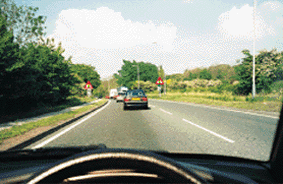
What does the solid white line at the side of the road indicate?
-
Question 2 of 50
Question 2
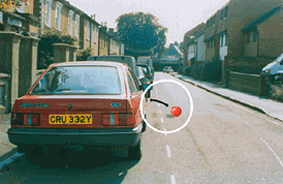
You’re driving past a line of parked cars. You notice a ball bouncing out into the road ahead. What should you do?
-
Question 3 of 50
Question 3

Your vehicle breaks down in a tunnel. What should you do?
-
Question 4 of 50
Question 4

What should you do when parking your vehicle facing downhill?
-
Question 5 of 50
Question 5
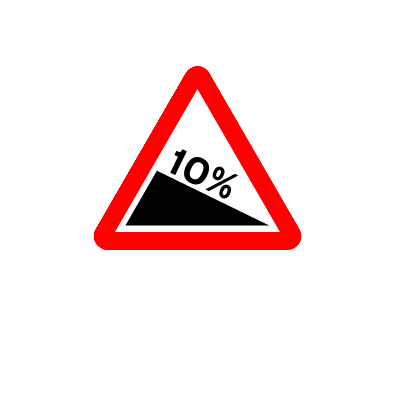
What does this sign mean?
-
Question 6 of 50
Question 6

What’s most likely to distract you while you’re driving?
-
Question 7 of 50
Question 7

When should you use hazard warning lights?
-
Question 8 of 50
Question 8

You see a pedestrian with a dog wearing a yellow or burgundy coat. What does this indicate?
-
Question 9 of 50
Question 9

You keep well back while waiting to overtake a large vehicle. What should you do if a car moves into the gap?
-
Question 10 of 50
Question 10
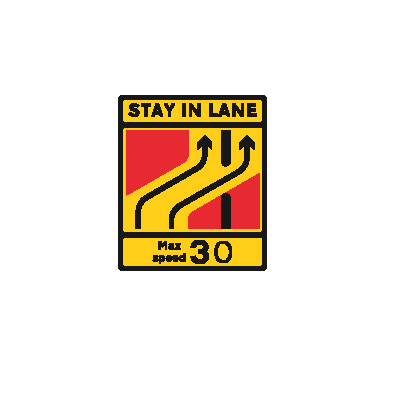
What does this sign mean?
-
Question 11 of 50
Question 11

You’re braking on a wet road. Your vehicle begins to skid. It doesn’t have anti-lock brakes. What’s the first thing you should do?
-
Question 12 of 50
Question 12

You’re driving a slow-moving vehicle on a narrow, winding road. What should you do?
-
Question 13 of 50
Question 13
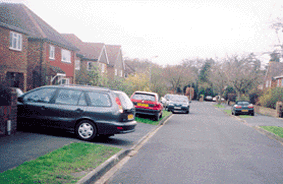
You’re driving along this road. The driver on the left is reversing from a driveway. What should you do?
-
Question 14 of 50
Question 14

When are you allowed to stop on a motorway?
-
Question 15 of 50
Question 15
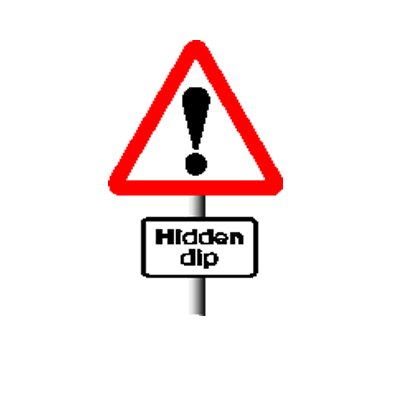
You’re about to overtake. What should you do when you see this sign?
-
Question 16 of 50
Question 16

A cycle lane, marked by a solid white line, is in operation. What does this mean for car drivers?
-
Question 17 of 50
Question 17

It’s a very windy day and you’re about to overtake a cyclist. What should you do?
-
Question 18 of 50
Question 18

You’re driving on a motorway and have to slow down quickly due to a hazard ahead. How can you warn drivers behind of the hazard?
-
Question 19 of 50
Question 19

You lose your way on a busy road. What’s the best action to take?
-
Question 20 of 50
Question 20

Anti-lock brakes reduce the chances of skidding. When is this particularly important?
-
Question 21 of 50
Question 21
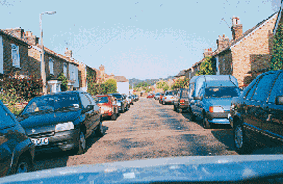
What hazard should you be aware of when travelling along this street?
-
Question 22 of 50
Question 22
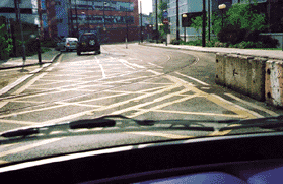
What’s the reason for the yellow crisscross lines painted on the road here?
-
Question 23 of 50
Question 23

What should you do when you meet an oncoming vehicle on a single-track road?
-
Question 24 of 50
Question 24

You’re turning left on a slippery road. What should you do if the back of your vehicle slides to the right?
-
Question 25 of 50
Question 25
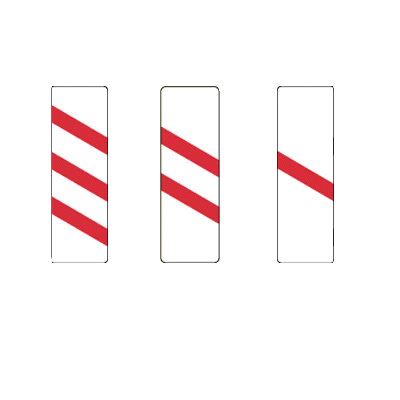
Where will you see these red and white markers?
-
Question 26 of 50
Question 26

By how much can stopping distances increase in icy conditions?
-
Question 27 of 50
Question 27

What does this sign mean?
-
Question 28 of 50
Question 28

You’re waiting to come out of a side road. Why should you look carefully for motorcycles?
-
Question 29 of 50
Question 29

When may the cost of your insurance come down?
-
Question 30 of 50
Question 30

Where does this marking normally appear on a road?
-
Question 31 of 50
Question 31

You’re about to drive home. You can’t find the glasses you need to wear. What should you do?
-
Question 32 of 50
Question 32

You’re driving towards a zebra crossing. A person in a wheelchair is waiting to cross. What should you do?
-
Question 33 of 50
Question 33
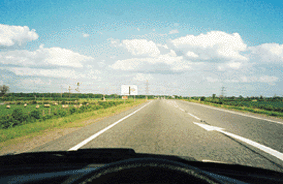
What does this road marking mean?
-
Question 34 of 50
Question 34
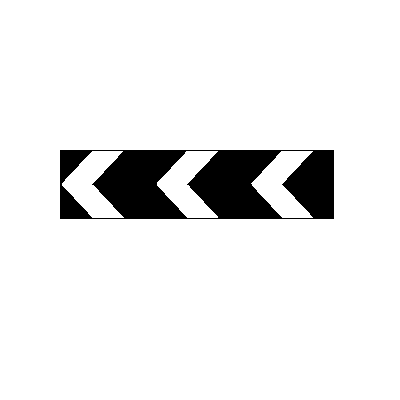
You see this sign ahead. What should you expect?
-
Question 35 of 50
Question 35

In good conditions, what’s the typical stopping distance at 70 mph?
-
Question 36 of 50
Question 36

At a railway level crossing, the red lights continue to flash after a train has gone by. What should you do?
-
Question 37 of 50
Question 37

What should you do when passing sheep on a road?
-
Question 38 of 50
Question 38

You’re turning left into a side road. What hazard should you be especially aware of?
-
Question 39 of 50
Question 39
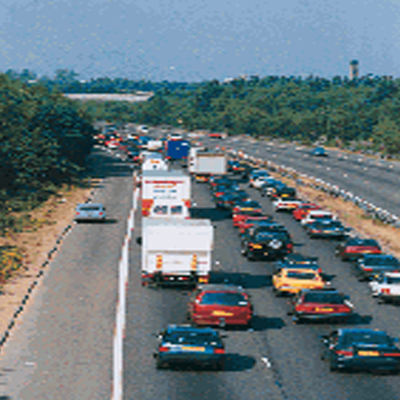
In heavy motorway traffic, the vehicle behind you is following too closely. How can you lower the risk of a collision?
-
Question 40 of 50
Question 40

You’re driving through a tunnel and the traffic is flowing normally. What should you do?
-
Question 41 of 50
Question 41

What speed limit is often found in narrow residential streets?
-
Question 42 of 50
Question 42

In which of these circumstances must you show your insurance certificate?
-
Question 43 of 50
Question 43

You’re making an appointment and will have to travel a long distance. How should you plan for the journey?
-
Question 44 of 50
Question 44

You’re driving over a level crossing. The warning lights come on and a bell rings. What should you do?
-
Question 45 of 50
Question 45

You’re driving on a well-lit motorway on a clear night. What must you do?
-
Question 46 of 50
Question 46
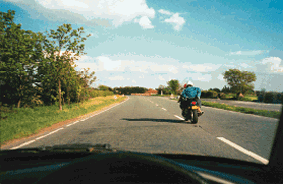
You’ve just been overtaken by this motorcyclist, who has cut in sharply. What should you do?
-
Question 47 of 50
Question 47

You’re on a busy main road and find that you’re travelling in the wrong direction. What should you do?
-
Question 48 of 50
Question 48

It can be helpful to plan your route before starting a journey. Why should you also plan an alternative route?
-
Question 49 of 50
Question 49

You’re driving on a long journey. What can you do to help prevent tiredness?
-
Question 50 of 50
Question 50
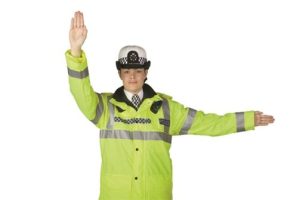
What does this signal from a police officer mean to oncoming traffic?
